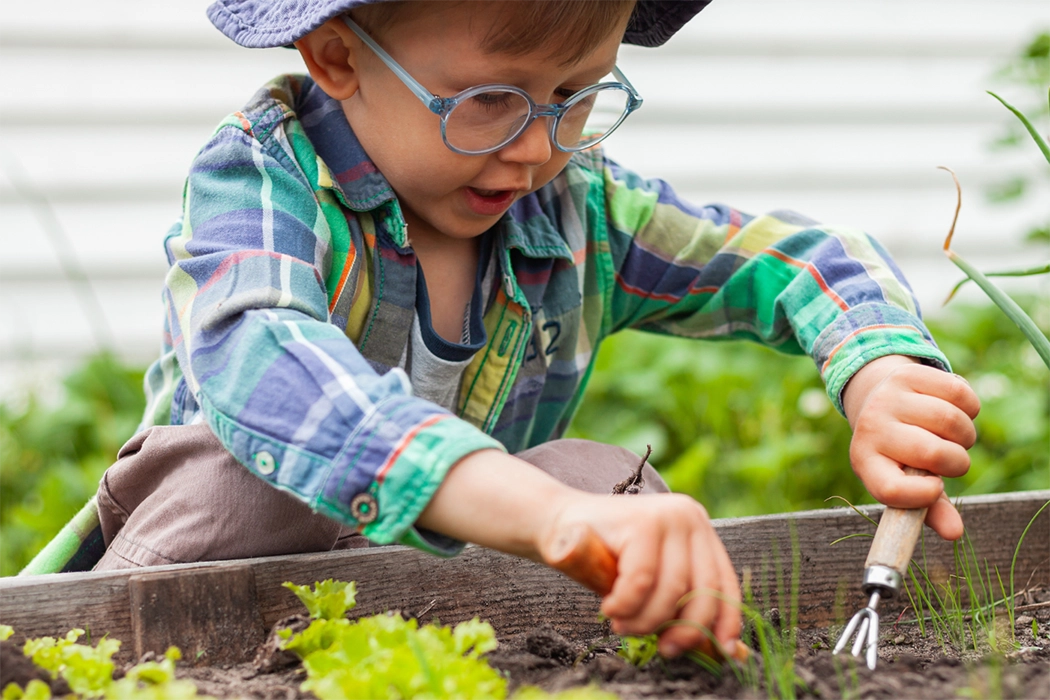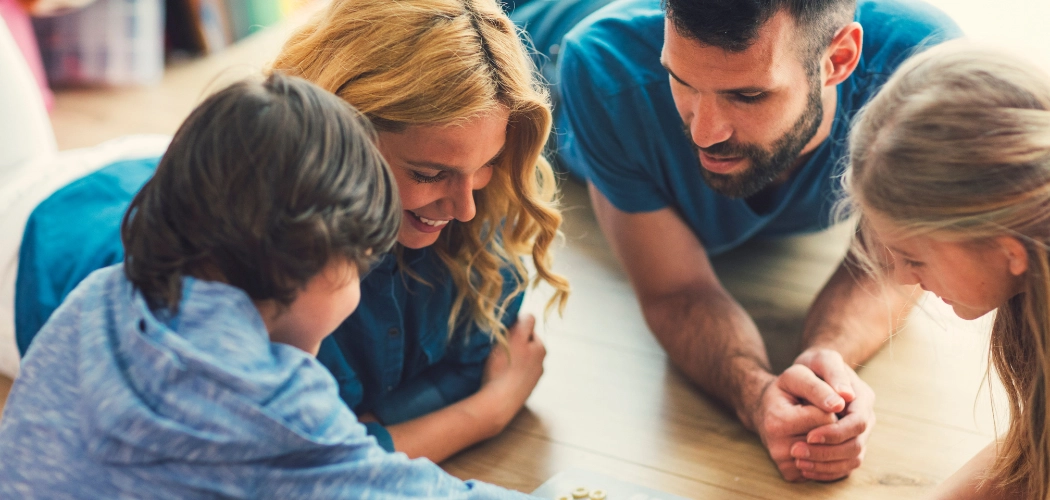Easy Plants for Kids Gardens
Kids will have a blast growing their own plants in the garden. Start with easy-to-grow varieties that are fun, fast and edible for maximum engagement. Here are some kid-friendly options:
Radishes
These crunchy root veggies grow quickly from seed, ready to harvest in as little as 3-4 weeks. Kids will love digging up the ripe, red radishes to eat. Sow seeds 1/2 inch deep and 2 inches apart. Thin seedlings to 4 inches apart.
Zinnias
No flower garden is complete without bright, beautiful zinnias. These hardy annuals come in almost every color and grow quickly from seed. Zinnias thrive in full sun and bloom all summer long. Let kids help sow seeds directly in the garden after the last frost.
Sunflowers
What’s more fun than watching towering sunflowers grow? These sun-lovers sprout fast, and kids will be amazed by how big they get. Opt for dwarf or medium-sized varieties perfect for little gardens. Plant seeds 1 inch deep and 6 inches apart.
Cherry Tomatoes
Kids will be so proud picking their own sweet, bite-sized tomatoes fresh from the vine. Cherry tomatoes thrive in containers, raised beds, or in-ground gardens. Set transplants 18 inches apart in full sun after danger of frost.
Strawberries
Sweet, juicy homegrown strawberries are hard to beat. Kids will love hunting for ripe berries among the leaves. Plant strawberries in spring or fall, spacing plants 12 inches apart in full or part sun.
Herbs
No kids’ garden is complete without fresh herbs like basil, oregano and mint. Their enticing scents and flavors will engage kids’ senses. Plant transplants or sow seeds in containers or garden beds. Cut herbs often to encourage new growth.
Fun, Themed Garden Ideas
Themed gardens are a fun way to get kids interested in gardening. Kids enjoy themes that tie into their interests, like food or shapes.
Pizza Garden
One popular themed garden is a pizza garden, where you grow the key ingredients for pizza – tomatoes, basil, peppers, and oregano. Let kids pick their favorite toppings and grow those plants from seed. Harvest the fresh ingredients to make homemade pizza.
Salsa Garden
Salsa gardens are another fun food theme. Grow tomatoes, peppers, cilantro and onions to make fresh salsa together. Kids can mix and match hot and mild peppers for their desired spice level.
Alphabet or Shape Garden
For younger kids, alphabet or shape themed gardens allow them to learn letters or shapes while gardening. Use curvy plants like vines or tall plants like sunflowers to form the shapes. Label plants with letter signs. Kids will love finding “their” plant in the garden.
Themed gardens make learning fun. Kids take pride and ownership in growing plants for their special garden theme. The gardens provide hands-on lessons in science, math, reading and more.
Gardening Activities for Kids
Gardening with kids provides a hands-on way for them to learn about nature, plants, responsibility and so much more. There are many fun activities you can do together in the garden that will engage their curiosity and energy.
Making Garden Markers
Let your child’s creativity shine by having them make homemade signs and markers for the garden. Provide popsicle sticks, paint and other craft supplies to decorate. They can make labels for different plants, sections of the garden, or signs with their names.
Digging in the Dirt
Most kids love digging in dirt and mud. Give them their own section of the garden to dig holes, sift soil, or search for worms and bugs. Supervise young kids so they don’t make too much of a mess.
Watering Plants
Kids can help keep the garden alive by watering the plants. Give them a small watering can or spray bottle so they can gently shower the plants without overdoing it. Show them how saturating the soil is important.
Harvesting Produce
One of the most rewarding parts of gardening is picking and eating fresh produce. Let kids harvest fruits, veggies and herbs they helped plant. They’ll be so proud to collect the bounty.
Tasting Edible Plants
While supervising, allow your child to sample edible flowers and herbs like nasturtiums and mint. This engages their senses and teaches them what’s safe to taste straight from the garden. Just be mindful of allergies.
Kid-Friendly Gardening Tools
Gardening with kids is more enjoyable when they have their own special tools sized just for them. Kid-sized gloves, trowels, watering cans and wheelbarrows allow children to work right alongside adults in the garden.
What to look for:
Gloves
Look for gardening gloves made of cotton or synthetic materials that will protect little hands without being bulky or inflexible.
Trowel
A small trowel that fits comfortably in a child’s hand makes digging and planting much easier.
Watering Can
Pick a lightweight plastic watering can that won’t be too heavy when full. Make sure it has a kid-friendly nozzle that’s easy to control and won’t get stuck open.
Wheelbarrow
A sturdy plastic wheelbarrow, sized for a child, can haul soil, mulch, flowers and small tools.
Having their own real tools engages kids in authentic gardening tasks. It also teaches responsibility and care of tools. Allowing children to get their hands dirty while equipped with child-sized gardening gear opens up a world of fun and learning. With the right kid-friendly tools, gardening together becomes an ideal shared activity for adults and children.
Container Gardening for Small Spaces
Container gardening is a great way to garden with kids, especially in urban areas or if you have limited yard space. Growing plants in pots, window boxes, or raised beds allows you to cultivate a garden anywhere. Container gardening works well for small spaces like patios, balconies, rooftops, or even just a windowsill.
Kids will enjoy selecting fun pots and containers for their plants. Let them paint and decorate basic terra cotta pots with acrylic paint or use unique vessels like teapots, watering cans or colanders as planters. For edibles, opt for large containers, at least 10-12 inches wide and deep, so there is enough room for vegetables to grow. Dwarf and patio varieties of plants are ideal for containers.
Fill pots with a quality potting mix, not garden soil. Make sure containers have drainage holes on the bottom. Place containers in a spot that gets at least 6 hours of sun daily. Help kids regularly water and care for container plants. Consider an automated drip irrigation system for when you’re away. With the right care and conditions, kids can successfully grow flowers, herbs, vegetables and more in containers!
Getting Kids Interested in Gardening
Getting kids interested in gardening starts with making it fun and engaging. Here are some tips:
Let them pick plants to grow
Giving kids a choice in what gets planted in the garden helps them feel ownership over the space. Take them to a nursery or give them a seed catalog, and let them choose a few vegetables, fruits or flowers they want to grow.
Make it fun – do activities in the garden
Turn gardening into a game by setting up a scavenger hunt for them to find different plants, bugs, worms, etc. Have theme days like “Water Wednesday” where they get to water all the plants. Or build bean tepees, fairy gardens, or other fun creations.
Have them track plant growth
Kids love watching the plants grow. Have them measure plant height each week and keep a garden journal with drawings, notes or photos of the changes. Let them make garden markers with the plant name and date planted. Celebrate each new bud, flower or fruit.
The key is creating an engaging, interactive environment where kids want to spend time.
Make it playful and educational at the same time. When kids are excited about gardening, it will become a lifelong hobby.
Gardening Safety Tips
Gardening with kids can be a fun learning experience for everyone, but safety should always be the top priority. Here are some tips to keep your little gardeners safe:
Closely supervise kids when they are using gardening tools. Sharp or motorized tools like pruners, loppers and tillers can cause injury if used incorrectly. Show them the proper way to carry and use age-appropriate tools.
Remind kids not to put any plant parts, berries or leaves in their mouth without checking with an adult first. Many common garden plants can be toxic if ingested. Teach them to ask before tasting.
Use sunscreen, hats, bug spray, gloves and other protective gear as needed. Sunburn, bites and thorns are no fun. Come prepared to protect tender skin and hands.
Make sure kids wash their hands after gardening, especially before eating. Soil can harbor bacteria and chemicals.
Know what plants you already have in your yard and check for toxicity before planting with kids. Remove or avoid any poisonous plants.
Supervise use of hoses and sprinklers. Don’t let unsupervised play get out of hand.
Watch for signs of allergic reaction in new gardeners. Stop activity if issues arise.
Gardening with common sense safety precautions will allow you and your little helpers to have a blast growing together!
Extending Learning After Gardening
Gardening with kids opens up many opportunities for learning that go beyond just planting and tending to plants. Here are some ideas for extending the learning after gardening:
Read Books About Plants
There are many excellent children’s books about gardening, plants and nature. Reading books together is a great way to get kids more interested in the science behind how plants grow. Books can introduce concepts like photosynthesis, pollination and the life cycle of plants in a kid-friendly way. Look for both fiction and non-fiction books that align with your child’s interests and reading level.
Cook or Bake with the Harvest
One of the most rewarding parts of gardening with kids is using the fresh ingredients you’ve grown together. Let them help pick produce from the garden and then make a simple recipe like salsa, muffins or a salad. Kids gain a sense of accomplishment from planting seeds, caring for the plants, and finally eating the results! Cooking together also teaches math skills like measuring, counting and fractions.
Try Fun Science Experiments
There are many kid-friendly science experiments and activities you can do together to complement gardening. For example, learn about photosynthesis by experimenting with leaves in light and dark environments. Or observe how plants uptake dyed water to learn about their vascular systems. Discover the power of buds by forcing branches to bloom indoors. The garden is full of opportunities for hands-on science learning.
Gardening Teaches Skills
Gardening with kids provides many opportunities for learning valuable life skills. By caring for plants, children gain a sense of responsibility for nurturing living things. They also gain an appreciation for where food comes from by growing their own fruits and vegetables. Kids take pride in watching the plants they started from seeds grow over time.
Gardening also reinforces science concepts kids learn in school like plant life cycles, pollination, weather and climate impacts on plants, and more. Getting kids involved in gardening from a young age helps them develop independence, self-confidence, and an appreciation for nature. The hands-on learning keeps them engaged physically and mentally. Allowing children to get a bit dirty interacting with soil also exposes them to beneficial microbes that can strengthen their immune systems.
Overall, gardening with children offers a fun way to teach essential life skills while spending quality time together outdoors.
Related Posts:




